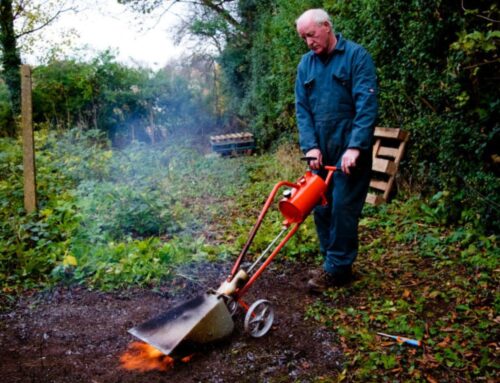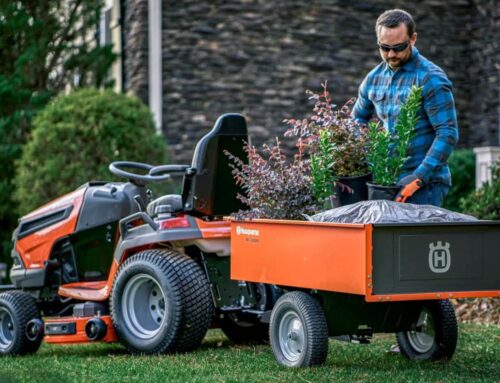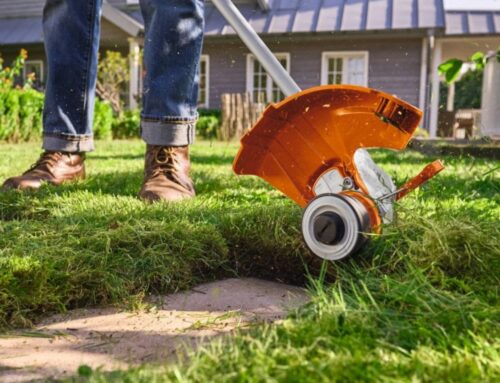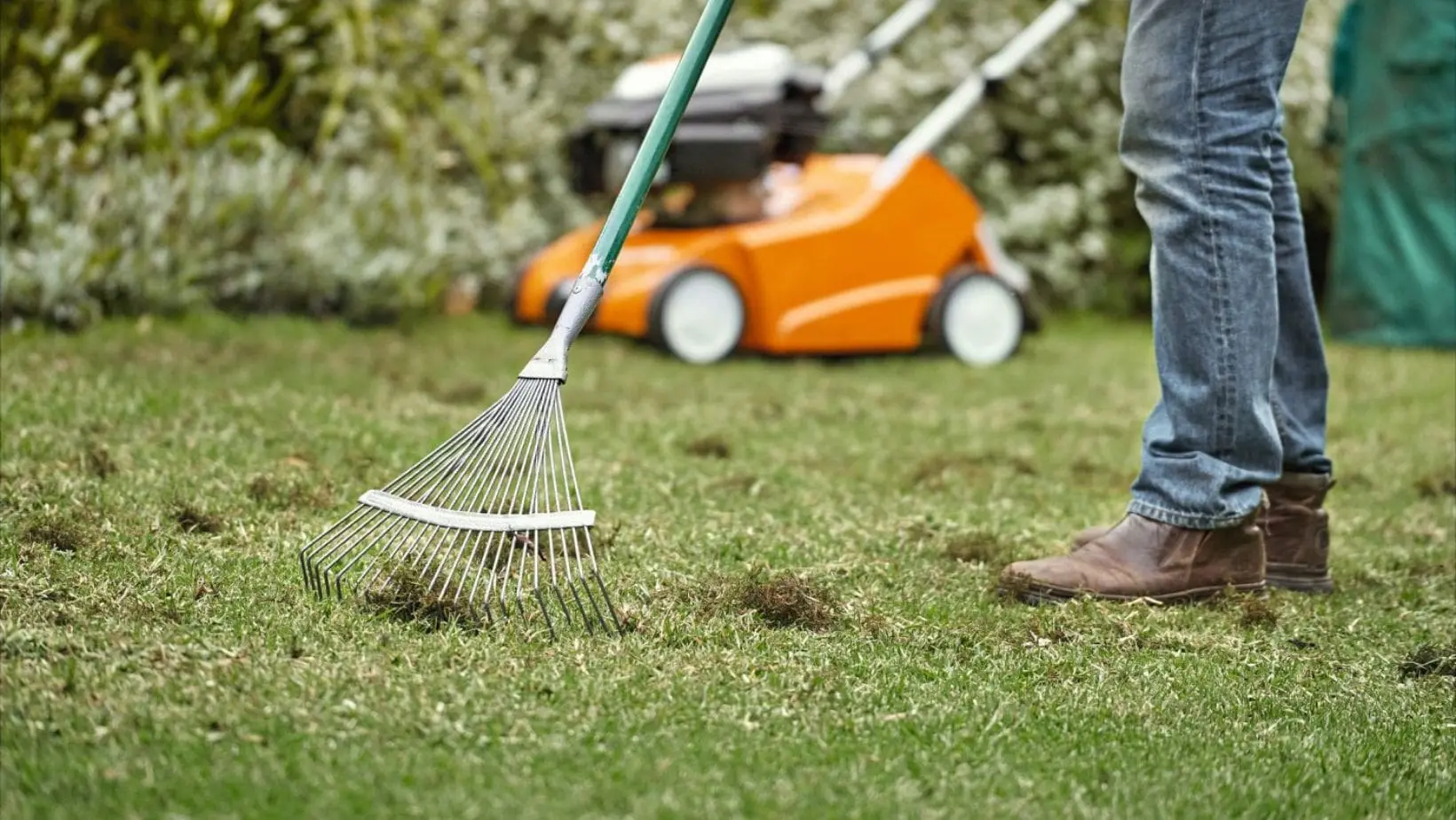
Dethatching lightly removes surface moss/thatch for a quick spring/autumn refresh; scarifying uses blades to cut and remove deep, spongy thatch (best in autumn, needs overseeding); aerating perforates or cores compacted soil to improve drainage and root growth (best early autumn/spring). Choose by layer: light surface = dethatch, thick felt = scarify, hard soil = aerate.
The Differences Between Aerating, Dethatching, and Scarifying
Two interlinked questions that many people ask us is what are the differences between aerating, dethatching and scarifying—and how do I know which is best for my lawn? Get the choice right and you’ll see greener growth, stronger roots, and far more resilient grass through the seasons.
With this in mind, let’s take a closer look at all three of these essential garden tasks to clarify exactly what they involve. And, while doing so, we’ll show you some of the best machines for the jobs…
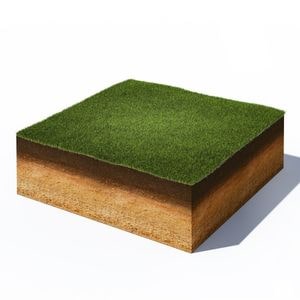 The Simple Way to Think About It
The Simple Way to Think About It
Imagine your lawn in layers. Right at the top you have loose debris and light surface moss. Beneath that sits the thatch layer: an interwoven mat of dead grass, old moss and organic matter that can choke new growth. Below everything is the soil itself, which compacts over time.
In short, dethatching tidies the surface and skims the upper thatch. Scarifying cuts deeper to pull out thick, embedded thatch and moss. Aerating tackles compacted soil by punching holes so that air, water and nutrients can freely reach the roots.
They’re complementary rather than competing tasks. So, if you’ve thick, bouncy thatch, start with scarifying. If the ground is hard and water lingers after rain, prioritise aeration. When the lawn just looks a little bit suffocated after winter, a light dethatch often works wonders, saving you the time needed for a more thorough scarifying job.
Dethatching: A Gentle Clear-Out That Helps the Lawn Breathe
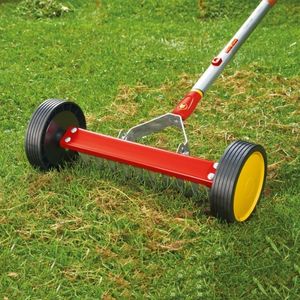 Dethatching is best described as a thorough comb of your grass. It uses spring tines or a raking action to lift away loose organic material sitting at or just above the thatch layer. Because it doesn’t slice into the soil, it’s ideal for lawns with light to moderate build-up that simply need breathing space. Recovery is typically quick in spring and early autumn, and you’ll notice fertiliser, sunlight and moisture working more effectively almost immediately.
Dethatching is best described as a thorough comb of your grass. It uses spring tines or a raking action to lift away loose organic material sitting at or just above the thatch layer. Because it doesn’t slice into the soil, it’s ideal for lawns with light to moderate build-up that simply need breathing space. Recovery is typically quick in spring and early autumn, and you’ll notice fertiliser, sunlight and moisture working more effectively almost immediately.
You should aim to dethatch during periods of active growth—mid-spring or early autumn—so the grass bounces back quickly. Because it’s a lighter intervention, you can plan one or two tidy-ups a year depending on conditions.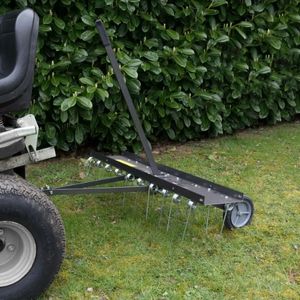
For simple hands-on control, the Wolf-Garten Multi-Change Roller Moss Removal Rake is an excellent tool. It fits your preferred Multi-Change handle and has a swinging head that glides when pushed and bites in when pulled, so you can be gentle on thin areas and more assertive where moss has thickened.
If you’re maintaining a large area and already use a ride-on mower, the Handy THTD Towed Dethatcher makes the job extremely efficient and consistent. Ten sprung prongs pull out moss and thatch across a generous 40-inch (100cm) working width, with an adjustable tray letting you add extra weight when deeper penetration is needed.
Scarifying: Deeper Thatch Removal When Lawns Feel Spongy
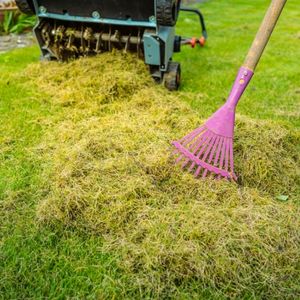 When the thatch layer is thick and the lawn feels bouncy underfoot, dethatching won’t go far enough. Scarifying is the deeper reset. A scarifier uses steel blades to cut into the sward and rip out the embedded mat that blocks air, water and nutrients. It looks dramatic on the day—your lawn may appear ragged—but it’s the most effective way to restore grass that’s been smothered for years. Afterwards you’ll see better drainage, more responsive feeding and fewer fungal issues, with new shoots establishing cleanly rather than struggling through felted debris.
When the thatch layer is thick and the lawn feels bouncy underfoot, dethatching won’t go far enough. Scarifying is the deeper reset. A scarifier uses steel blades to cut into the sward and rip out the embedded mat that blocks air, water and nutrients. It looks dramatic on the day—your lawn may appear ragged—but it’s the most effective way to restore grass that’s been smothered for years. Afterwards you’ll see better drainage, more responsive feeding and fewer fungal issues, with new shoots establishing cleanly rather than struggling through felted debris.
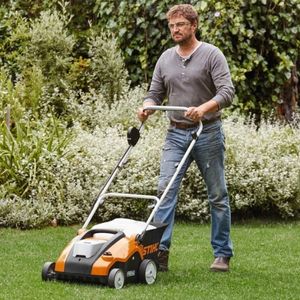 The best time to scarify a lawn is usually in September. Treat it as a small project. A couple of weeks beforehand, kill active moss so you’re not spreading live spores. A few days before, mow low to help the blades reach the thatch. Start scarifying on a higher setting, then lower in stages as required, making additional passes only where necessary. Once you’ve cleared the debris, overseed and feed to speed recovery and bring the lawn back thicker than it was before.
The best time to scarify a lawn is usually in September. Treat it as a small project. A couple of weeks beforehand, kill active moss so you’re not spreading live spores. A few days before, mow low to help the blades reach the thatch. Start scarifying on a higher setting, then lower in stages as required, making additional passes only where necessary. Once you’ve cleared the debris, overseed and feed to speed recovery and bring the lawn back thicker than it was before.
For small to medium-sized gardens, the STIHL RLA 240 Cordless Scarifier is a superb option. It offers two heads: fixed blades for deeper scarifying and a spring-tine roller for gentler thatch removal, with an adjustable working depth from 7.5mm above to 9.5mm below the surface. Featuring a 34cm working width and weighing just 14 kg, this battery-powered scarifier is very easy to handle and quiet enough for residential areas. A spacious 50-litre collector keeps you moving, while the foldable handle helps with storage.
Aerating: Relieving Compaction So Roots Grow Deeper
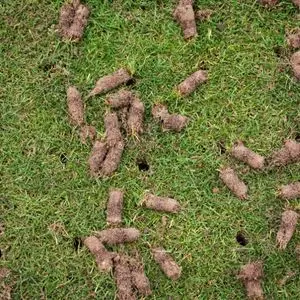 If your soil feels rock hard, mower wheels leave marks, or water sits on the surface after rain, compaction is likely holding your lawn back. Aeration solves this by perforating the soil so that oxygen, water and nutrients can reach the root zone. The results are more gradual than scarifying, but profound: roots chase those new pathways, drainage improves, and the sward thickens from the base up. This makes the lawn more resilient to drought, disease and heavy footfall.
If your soil feels rock hard, mower wheels leave marks, or water sits on the surface after rain, compaction is likely holding your lawn back. Aeration solves this by perforating the soil so that oxygen, water and nutrients can reach the root zone. The results are more gradual than scarifying, but profound: roots chase those new pathways, drainage improves, and the sward thickens from the base up. This makes the lawn more resilient to drought, disease and heavy footfall.
There are two main approaches to aeration. Spike aeration uses solid tines to puncture holes and suits mild compaction or interim maintenance. Core aeration removes small plugs of soil and is best for heavy clay or long-neglected turf, because it physically relieves pressure and creates space for 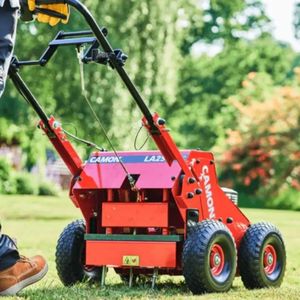 top-dressing materials to settle.
top-dressing materials to settle.
Pick your moment carefully. Early autumn often gives the best balance of moisture and warmth; spring also works if winter has compacted the ground. After aerating, brush a suitable top-dressing into the holes, then overseed and feed so young roots can establish in that improved soil structure.
A dependable choice of aerator is the Camon LA25, supplied with both hollow corer tines and solid spikes as standard. Its off-set crank system punches tines firmly into the ground for even results, while foam-filled tyres avoid punctures and reduce marking. With holes typically spaced 3-4 inches (7.5–10cm) apart depending on your walking pace, you get a consistent pattern that supports deep root development across the lawn.
Choosing the Right Method and When to Do It
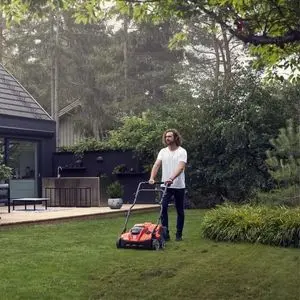 Start with a ground-level check. Part the grass blades; if you can’t easily see soil and the lawn feels spongy, tackle the thatch. Go straight to scarifying when the layer is thick and moss is woven through; use dethatching when the build-up is lighter and you mainly need a freshen-up. If the soil is hard, the lawn looks thin regardless of feeding, and water tends to puddle, make aeration your first step.
Start with a ground-level check. Part the grass blades; if you can’t easily see soil and the lawn feels spongy, tackle the thatch. Go straight to scarifying when the layer is thick and moss is woven through; use dethatching when the build-up is lighter and you mainly need a freshen-up. If the soil is hard, the lawn looks thin regardless of feeding, and water tends to puddle, make aeration your first step.
Many lawns benefit from a combination across the year, but resist doing everything at once. A light spring dethatch to clear winter debris can be followed by aeration if compaction is evident. In early autumn, a deeper scarify prepares the surface for overseeding and sets the lawn up for the following season. The common thread is recovery: schedule these jobs during active growth, and give the grass time between intensive treatments so it can rebuild.
 What to Expect and When You’ll See It
What to Expect and When You’ll See It
Dethatching delivers a quick cosmetic lift because you’re tidying the surface. Scarifying looks harsh on the day, but with overseeding and feeding you’ll usually see strong renewal within a few weeks.
Aeration is the slow-burn improvement: as roots deepen, mowing quality improves, weeds struggle to compete, and the lawn stands up better to traffic and dry spells. Keep mowing heights sensible, water deeply but infrequently in dry weather, and feed appropriately, and you’ll compound the benefits of each job over time.
Ready to Improve Your Lawn? We’ve Got the Kit—and the Knowhow
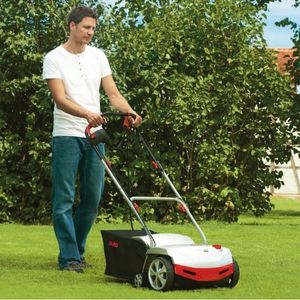 Here, at Ron Smith, we stock a superb range of scarifiers for sale, including cordless, electric, and petrol-powered models. We’ve got a diverse selection of aerators too, as well as dedicated dethatchers in our hand tools and ride-on mower accessories categories. What’s more, we’ve decades of practical experience in this exact area, so don’t hesitate to contact us for expert advice. Tell us how your grass looks and feels today, and we’ll help you choose the right machine for the job, so you get visible, lasting improvements in the health and appearance of your lawn.
Here, at Ron Smith, we stock a superb range of scarifiers for sale, including cordless, electric, and petrol-powered models. We’ve got a diverse selection of aerators too, as well as dedicated dethatchers in our hand tools and ride-on mower accessories categories. What’s more, we’ve decades of practical experience in this exact area, so don’t hesitate to contact us for expert advice. Tell us how your grass looks and feels today, and we’ll help you choose the right machine for the job, so you get visible, lasting improvements in the health and appearance of your lawn.


